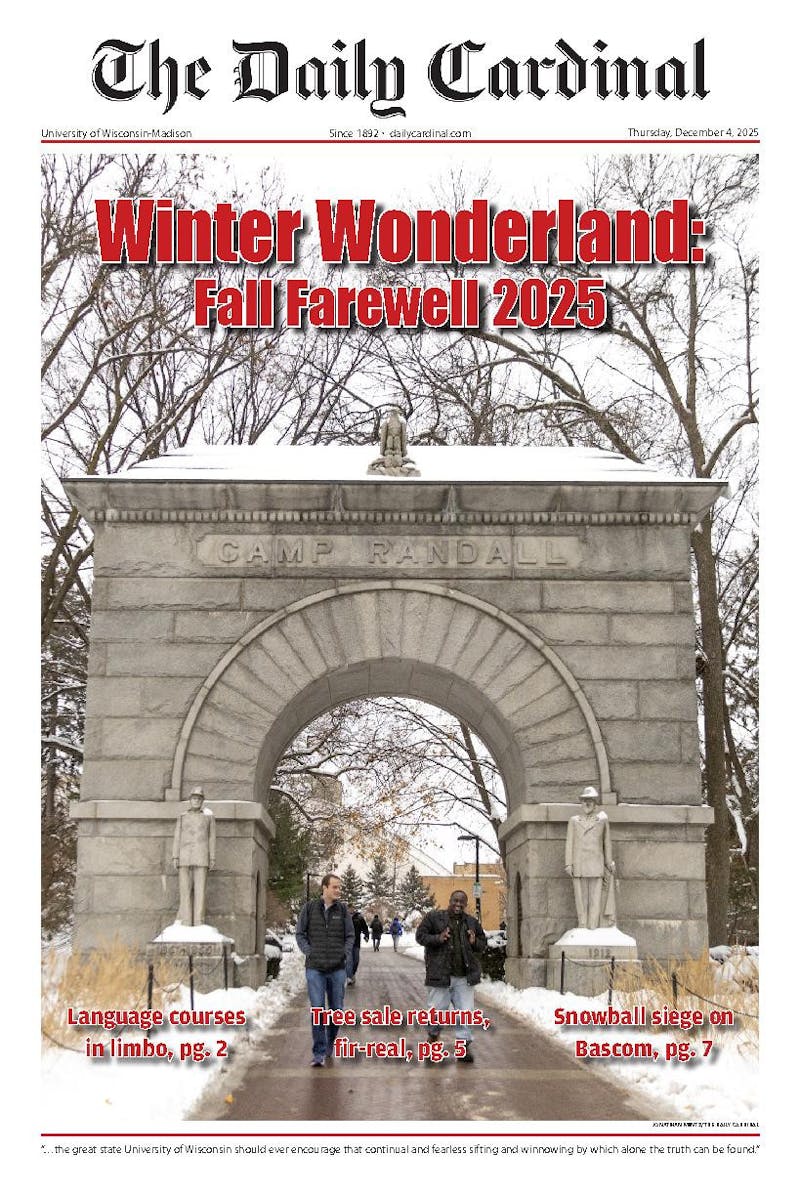Hundreds of community members poured into the sun-soaked cartography library at the University of Wisconsin-Madison’s Science Hall in the last 10 days of July, gingerly perusing through decades of fantasy maps, all created by one woman.
The exhibit, curated by UW-Madison alum and University of Oregon professor Mark Fonstad, showcased the maps, annotated books and meticulous research notes behind Karen Wynn Fonstad’s, his mother, atlases of worlds including “The Lord of the Rings” and “Dungeons & Dragons.”
What started as a simple archival project quickly ballooned into national media coverage and local exhibits. Mark donated Fonstad’s work to the American Geographical Society Library (AGSL) at the end of the summer. While Mark — like many others — grew up admiring his mother’s maps, he told The Daily Cardinal he only now realizes “how truly impactful” they were.
Charting history
Fonstad published her first cartographical collection in a book titled “The Atlas of Middle Earth” in 1981 and immediately developed a cult following. Yet, despite developing a fan base through the years, she avoided fantasy conventions and the public eye for most of her life.
“It wasn’t until Peter Jackson’s ‘Lord of the Rings’ movies that she started to get out of her skin and went to some of those conventions,” Mark said.
At those conventions, Fonstad truly started to realize for the first time how much her maps meant to other people, and the impact she’d made with them.
In 2005, after a long fight with breast cancer, Fonstad died at the age of 59.
As a part of The New York Times series “Overlooked,” which documents “remarkable people whose deaths went unreported in The Times,” the paper highlighted Fonstad’s life, work and journey through three decades of cartography.
After interest in his mother’s maps rose again with the Times article, Mark decided to scan his mother’s work. He pulled out the “almost 1,000” maps in his mother’s collection and began the arduous process of cataloging them.
Because the equipment needed to properly digitize these creations was so expensive, Mark felt there were “only two places in the country” he could digitize his mother’s work: his office at the University of Oregon or UW-Madison's cartography library.
Equipped with a drum scanner, a professional-grade rotating scanner that produces the highest quality physical to digital conversion of an image possible and the blessing of his alma mater, Mark got to work scanning and documenting his mother’s work. Nearly all of the maps were made with thin layers of semi-transparent paper that created the final product when layered together, and Mark painstakingly digitized every map.
Not long after coming to Madison, Mark received a call from Wisconsin Public Radio asking for an interview. They arrived at the cartography library to find a display of Fonstad’s work meticulously laid out. The decision to do so ended up defining the rest of Mark’s summer at UW-Madison.
“After the radio show aired, within a day, there were people coming in off the street wanting to see the maps,” Mark said.
Seeing such a home-grown interest in the maps, Jaime Martindale, head of the UW-Madison cartography library, decided to turn the library into a one-of-a-kind exhibit, displaying Fonstad’s original maps publicly for the first time in history.
“You never get to see everything all together,” Mark said. “I thought, ‘wouldn’t it be great to have a show?’”
“Hundreds” of people came to the show according to Mark, with the number of attendees exceeding even what he thought was possible.
“I don’t think it really hit me how much my mother’s work is foundational to fantasy cartography,” Mark said. “So many people came in and said, ‘When I want to think about a fictional world, this is how I think about it.’”
Mark attributes this to not just the fact Fonstad was one of the first authors to make a fantasy atlas, but the unique, grounded methods she approached her work with.
“She approached fantasy worlds like you would approach a real world. “If you went to work for National Geographic, it wouldn’t have been that different than what she was doing for Middle Earth,” Mark said. “It doesn’t matter that it’s a fantasy world, it still takes research. You have to connect what the author is envisioning to what you have put down on the page.”
It was that in-depth research and deep understanding of modern cartography methods that Mark said set his mother apart from other contemporary cartographers. Her “30 or 40” readings of books like “The Lord of the Rings” contributed to the deep, almost lifelike impressions of the worlds she chose to map.
After seeing the public’s interest in Fonstad’s maps, the AGSL agreed to take every map, transparency and annotated book his mother had ever created.
On Aug. 8, almost four months after Mark’s preservation efforts first started, he drove his mother’s entire body of work down to the AGSL at the University of Wisconsin-Milwaukee and entrusted his mother’s legacy to the public for the rest of time.
















